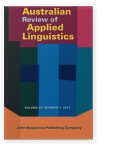Vol. 40:1 (2017) ► pp.3–18
Lexical diversity and the use of academic and lower frequency words in the academic writing of EFL students
This study focuses on lexical diversity and the use of academic and lower frequency words in essays written by EFL (English as a Foreign Language) students enrolled in Years 1 and 2 at the undergraduate university level. The purpose of this study is to find out the extent to which EFL students become more proficient in their use of academic and lower frequency words and make more diverse choices in their writing after one year of undergraduate university education in English. The study also compares essays written by EFL students and NS (native speaker) students to determine inter-language differences. Essays written by 62 EFL students and 198 NS students at Years 1 and 2 were analyzed for this study. The findings showed no statistically significant difference between the essays written by EFL students in Year 1 and those written in Year 2, either in terms of lexical diversity or in terms of the use of academic and lower frequency words. EFL students in both year levels had a preference for highly frequent words (words in the 1k frequency band). This is in contrast to the NS students, whose use of academic and some lower frequency words improved in Year 2. The findings also showed a statistically significant difference between the essays written by the EFL and the NS students in both year levels. The EFL students made less diverse lexical choices and used fewer words in various frequency bands than the NS students. Findings are discussed and recommendations are offered to EFL students and their educators on how to focus on these aspects of academic writing.
Article outline
- Introduction
- The present study
- Methods
- Participants
- Task, measures, and data analysis
- Findings
- Discussion
- Conclusions
- Notes
-
References
This article is currently available as a sample article.
